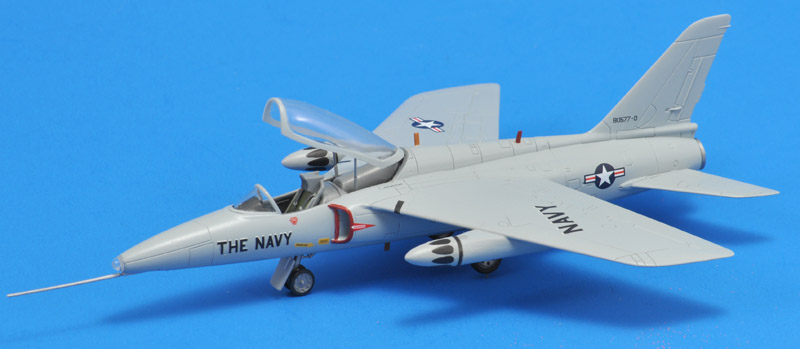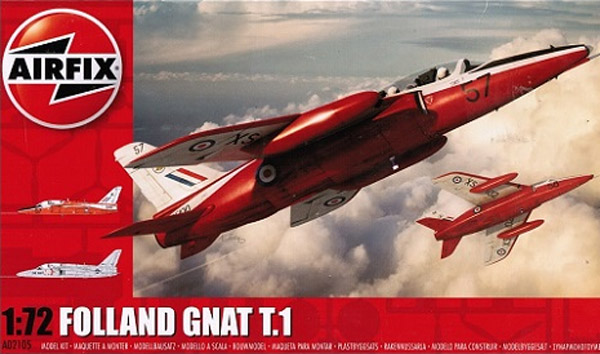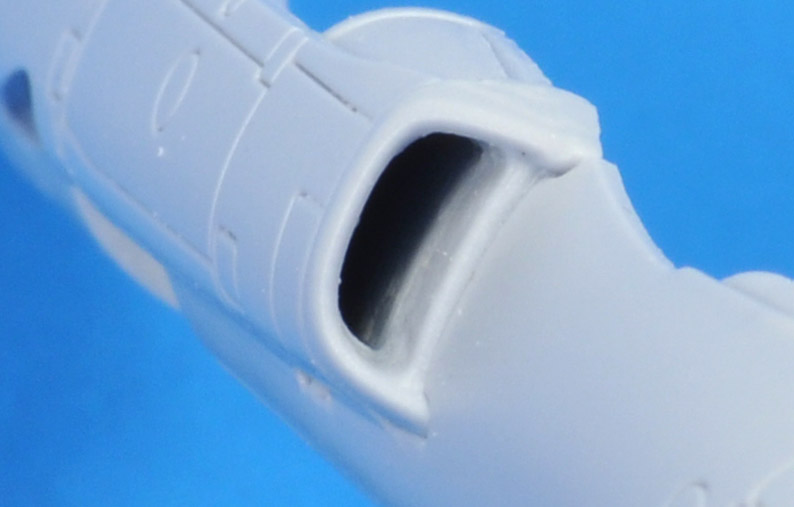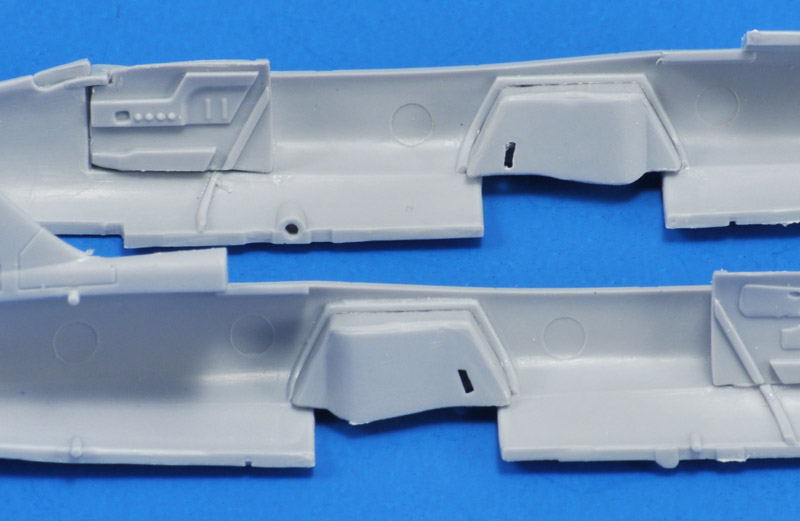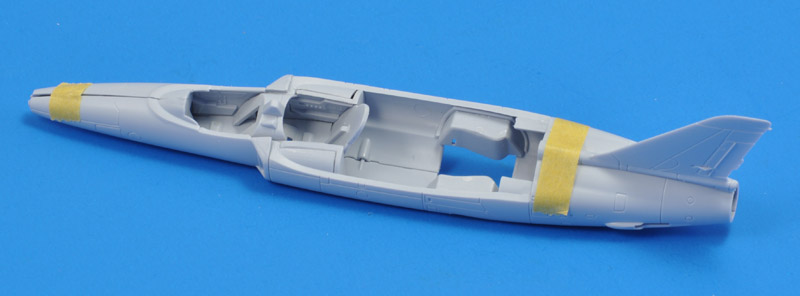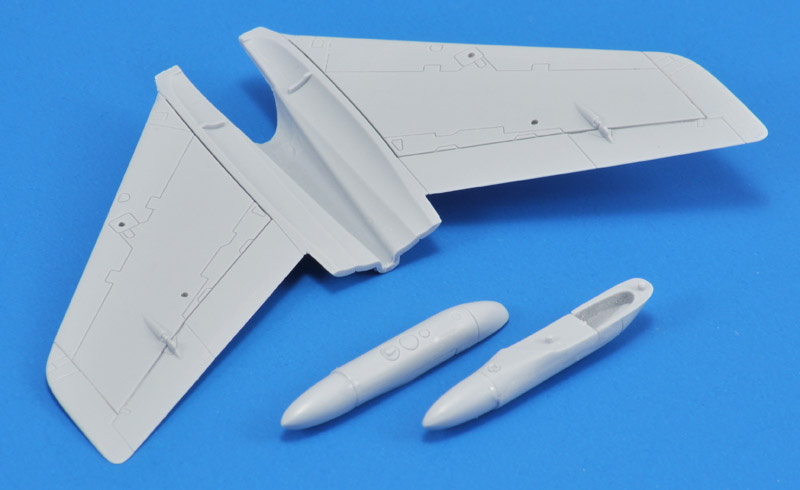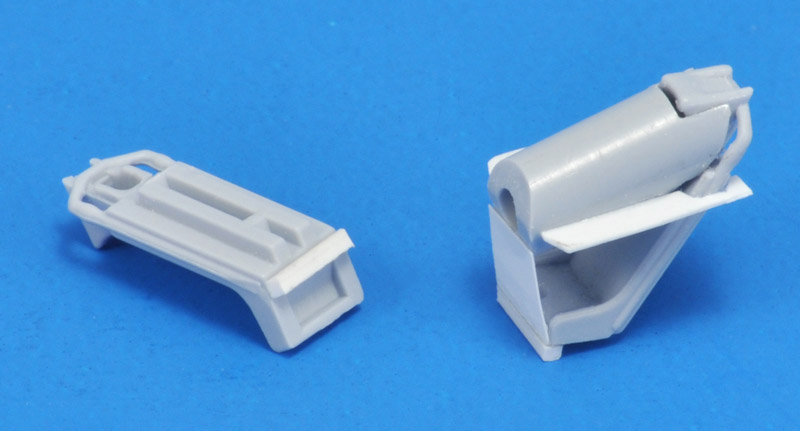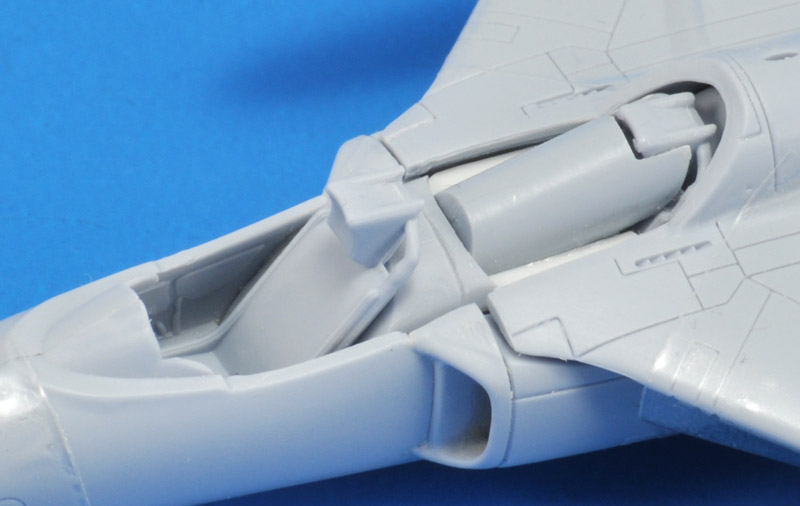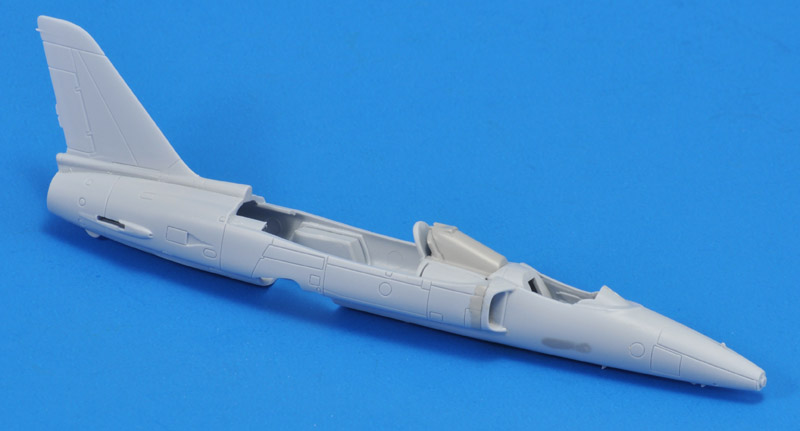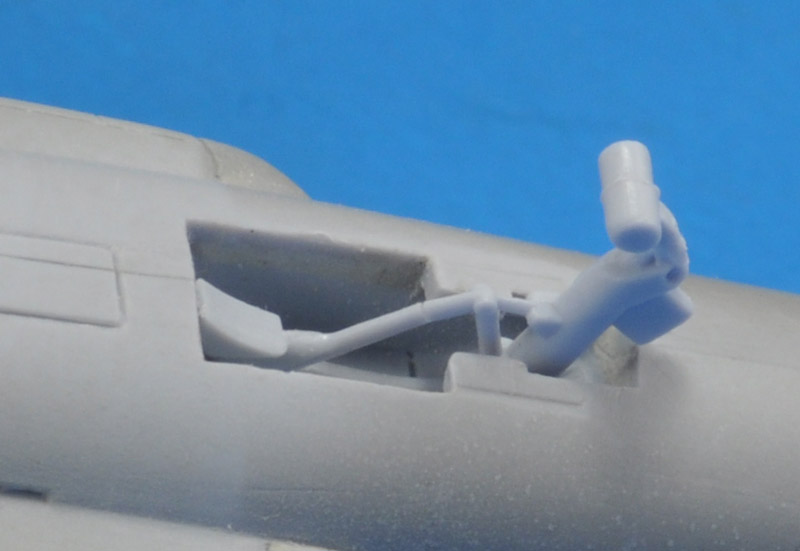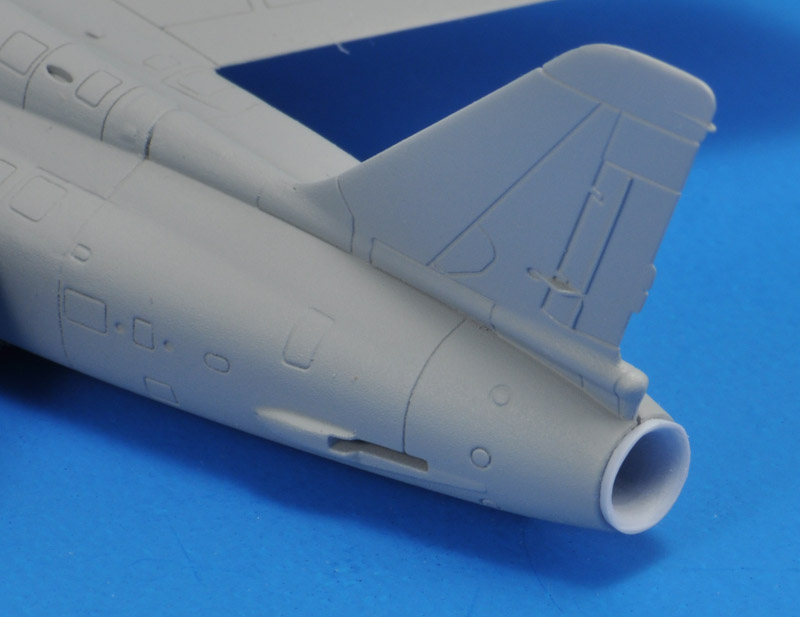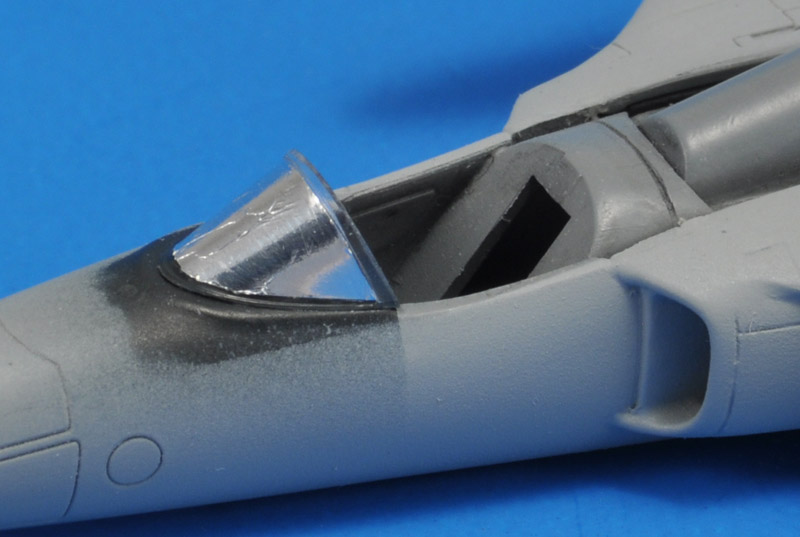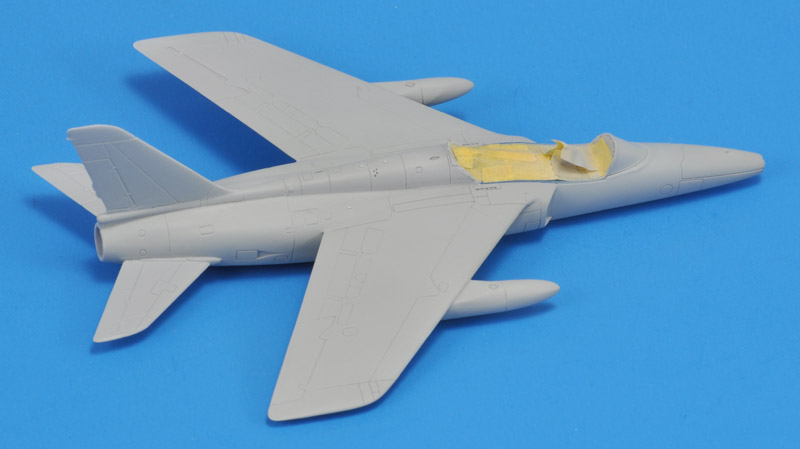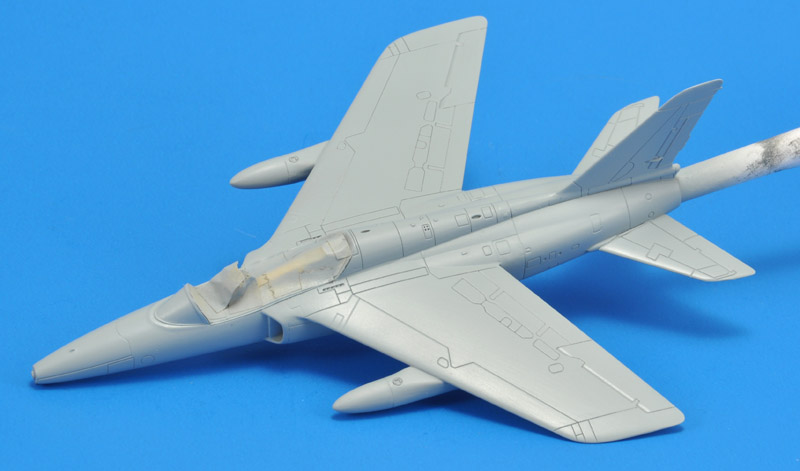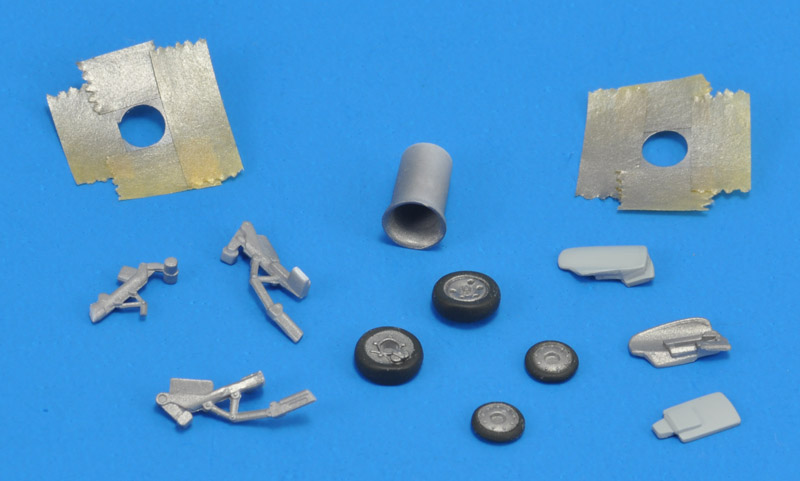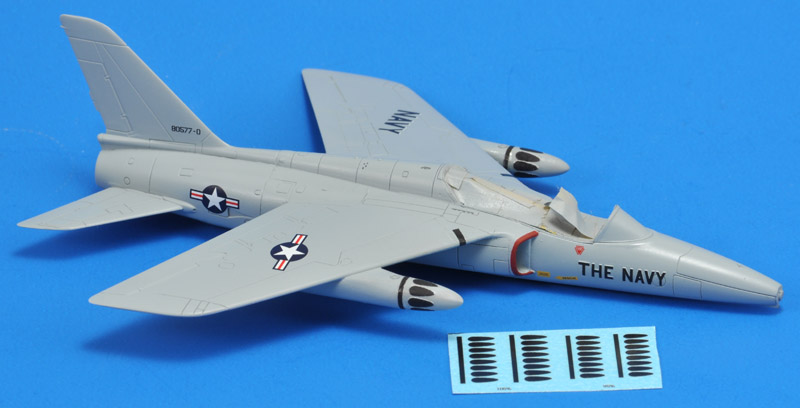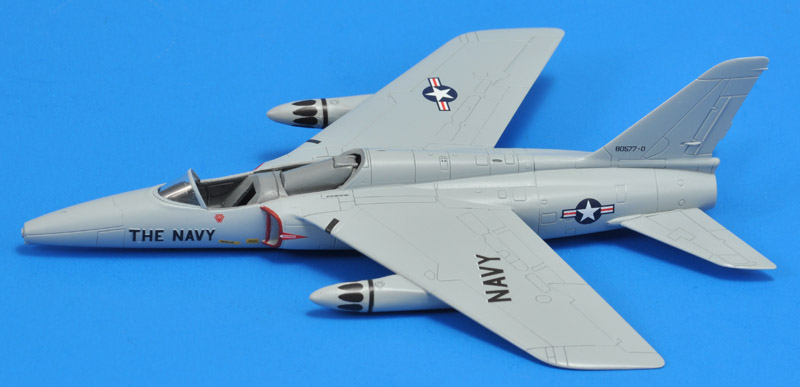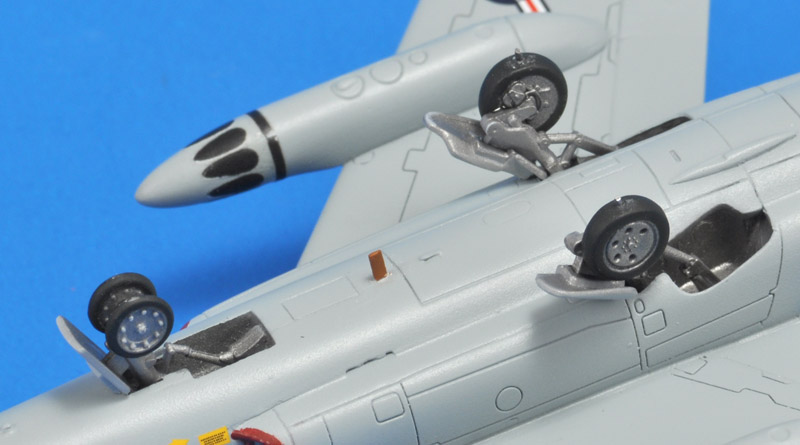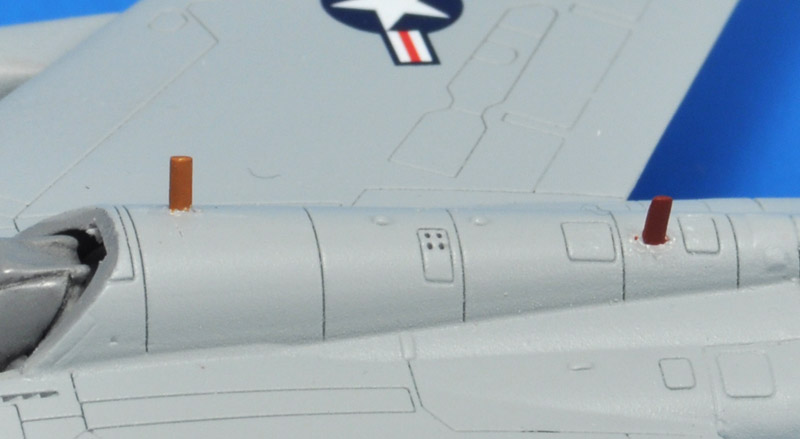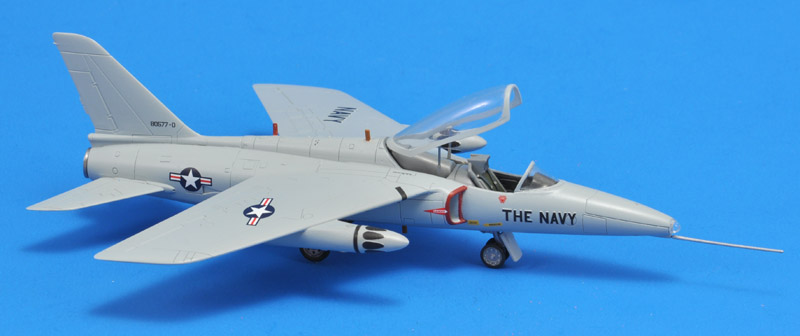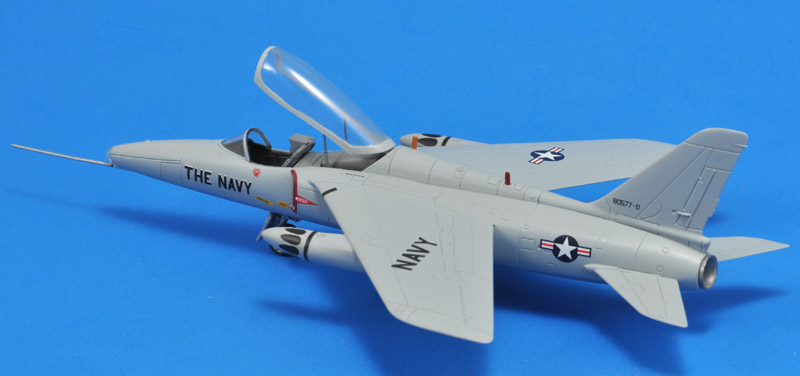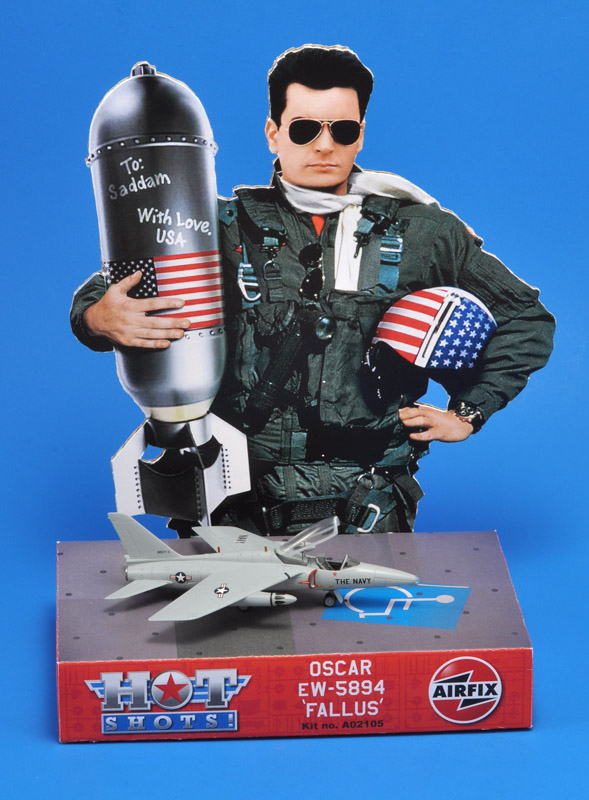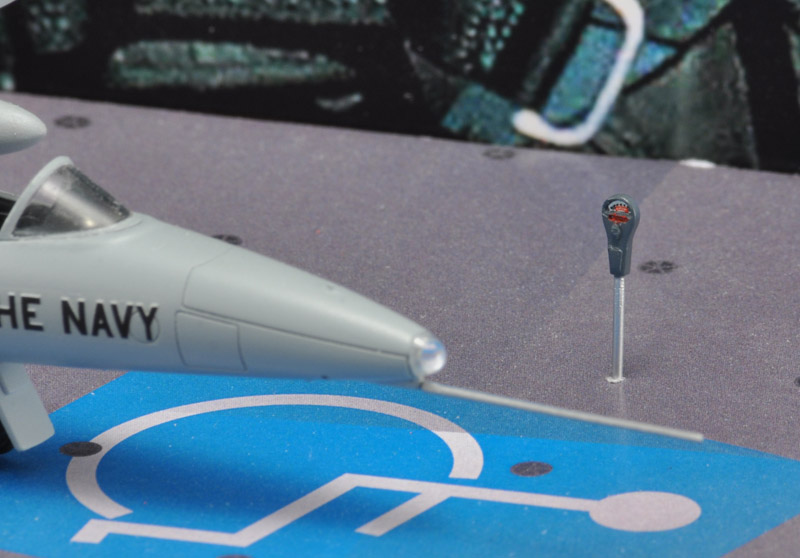The movie usually shows the Gnats or their mock-ups with two hydraulic struts for the canopy. They differ in style, therefore I did not try too hard to copy the exact style. I used an 0.5 mm spring steel wire with an 0.7 mm Albion micro tube slid over it. The latter part was painted MRP-100 FS 36231, the former left blank. Inside the canopy I glued two tiny blocks of plastic strip, and drilled shallow holes to accept the hydraulic cilinders.
The ejection seats in the movie again showed all kinds of variations, so I roughly took the average for my seat. They all lacked the ejection handle, so I left that off. The standard Gnat seat has the parachute serve as the seat back, and I painted that green. The seat bottom is usually a yellow survival pack with a sheepskin cover, so I painted it tan. I added some simple seat belts from an old Eduard F-104D/J set, painted dark gray. It's all very simple, not a real attempt at creating a good-looking - it would far exceed the goals set for this model.
| 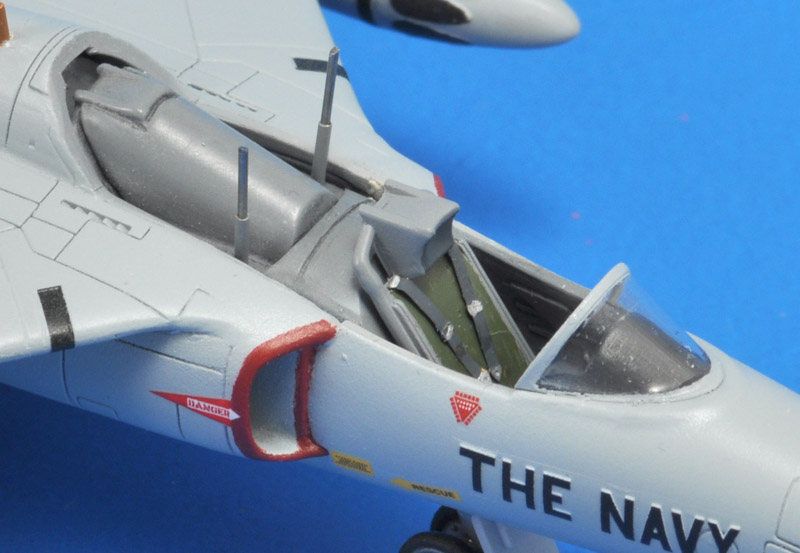
|
